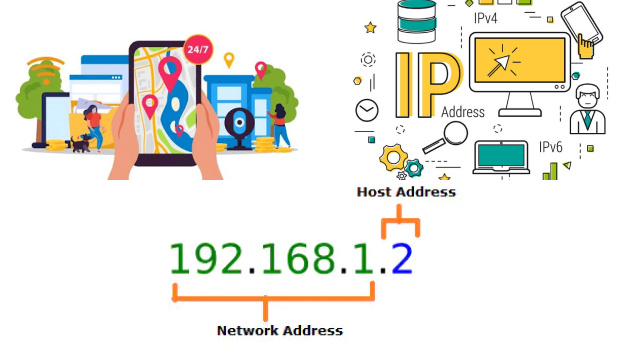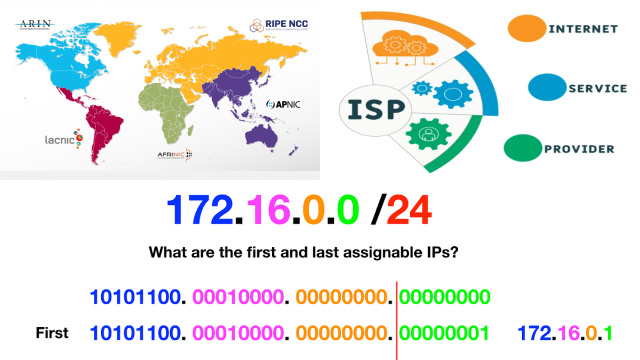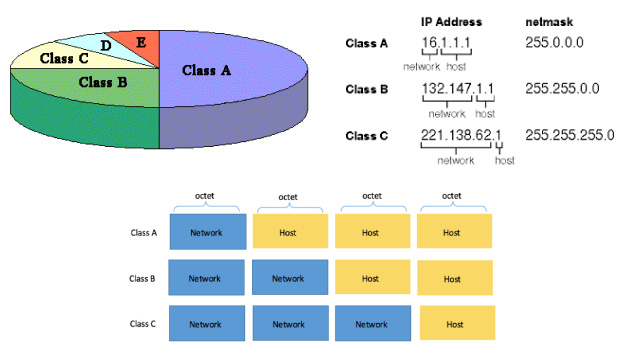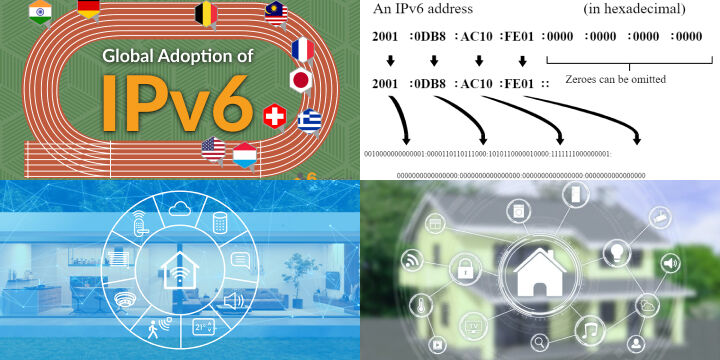What Are IP Addresses and Why Are They Important?
IP addresses, or Internet Protocol addresses, are unique numerical identifiers assigned to every device connected to the internet. They are essential for communication between devices on the internet, allowing them to send and receive data packets.
IP addresses are important because they enable devices to identify and communicate with each other. Without IP addresses, it would be impossible for devices to connect to the internet and for data to be transmitted across the network.
There are two types of IP addresses: IPv4 and IPv6. IPv4 addresses are 32-bit numbers and are most commonly used today. However, with the rapid growth of internet-connected devices, the supply of IPv4 addresses is running out. IPv6 addresses, which are 128-bit numbers, were introduced to address this issue and provide a much larger pool of unique addresses.
In summary, IP addresses are the backbone of the internet and allow devices to communicate with each other. Without them, the internet as we know it would not be possible.
The Different Types of IP Addresses
There are two main types of IP addresses: IPv4 and IPv6.
IPv4 addresses are 32-bit numbers and are made up of four groups of up to three digits separated by periods. For example, 192.168.0.1 is an example of an IPv4 address. IPv4 addresses are the most commonly used type of IP address and have been used since the early days of the internet. However, the supply of IPv4 addresses is running out due to the rapid growth of internet-connected devices.
IPv6 addresses, on the other hand, are 128-bit numbers and are made up of eight groups of up to four hexadecimal digits separated by colons. For example, 2001:0db8:85a3:0000:0000:8a2e:0370:7334 is an example of an IPv6 address. IPv6 addresses were introduced to provide a larger pool of unique addresses to accommodate the growing number of internet-connected devices.
In addition to these two main types, there are also private IP addresses, which are reserved for use on private networks, and dynamic IP addresses, which are assigned by the internet service provider and can change over time.
How IP Addresses Are Assigned and Distributed
IP addresses are assigned and distributed by the Internet Assigned Numbers Authority (IANA) and its regional registries, such as the American Registry for Internet Numbers (ARIN), the Asia-Pacific Network Information Centre (APNIC), and the Réseaux IP Européens Network Coordination Centre (RIPE NCC).
When an organization needs IP addresses, they typically request them from their internet service provider (ISP) or from a regional registry. The ISP or regional registry will then allocate a block of IP addresses to the organization, which they can use to assign addresses to their devices.
The allocation of IP addresses is based on the classful addressing system, which divides IP addresses into different classes based on their network portion and host portion. However, this system has largely been replaced by the classless inter-domain routing (CIDR) system, which allows for more flexible allocation of IP addresses.
In addition to the regional registries, there are also private IP addresses, which are reserved for use on private networks and do not need to be assigned by a registry. These addresses are typically assigned by the organization or network administrator.
How IP Addresses Facilitate Communication Between Devices
IP addresses facilitate communication between devices on the internet by providing a unique identifier for each device. When a device wants to send data to another device on the internet, it uses the recipient’s IP address to route the data packets to the correct destination.
To establish a connection between devices, the sending device sends a request to the recipient device, which includes its IP address. The recipient device then responds with its own IP address and a connection is established.
Once the connection is established, the devices can exchange data packets, which are broken down into smaller units and sent across the internet. Each data packet includes the IP address of the sending and receiving devices, as well as information on how the packet should be handled and reassembled at the destination.
Overall, IP addresses play a critical role in enabling communication between devices on the internet and allowing for the exchange of data across the network.
IP Address Classes and Subnets: What You Need to Know
IP addresses are divided into classes and subnets to help manage and organize the allocation of addresses. The classful addressing system divides IP addresses into five classes, A through E, based on the number of bits used for the network portion and host portion of the address.
Class A addresses use the first 8 bits for the network portion and the remaining 24 bits for the host portion, allowing for up to 126 networks and over 16 million hosts per network. Class B addresses use the first 16 bits for the network portion and the remaining 16 bits for the host portion, allowing for up to 16,384 networks and 65,536 hosts per network. Class C addresses use the first 24 bits for the network portion and the remaining 8 bits for the host portion, allowing for up to 2,097,152 networks and 256 hosts per network.
Subnets, on the other hand, allow networks to be divided into smaller sub-networks, each with its own unique identifier. This enables more efficient use of IP addresses and helps to reduce network congestion. Subnets are identified by a subnet mask, which indicates the network portion and subnet portion of the address.
Overall, understanding IP address classes and subnets is important for managing and organizing the allocation of IP addresses and optimizing network performance.
The Role of DNS in Translating IP Addresses to Domain Names
The Domain Name System (DNS) is a crucial component of the internet that translates domain names, such as www.google.com, into their corresponding IP addresses. When a user types a domain name into their web browser, the browser sends a request to a DNS server to obtain the IP address of the website.
The DNS server then looks up the IP address associated with the domain name and returns it to the user’s web browser. This allows the user’s device to connect to the website’s server using the IP address.
DNS also allows for the creation of domain name hierarchies, which enable the organization and management of domain names. Each domain name is associated with a top-level domain (TLD), such as .com or .org, and can also have subdomains, such as www or mail.
Overall, the DNS plays a critical role in enabling users to access websites and other internet resources by translating domain names into their corresponding IP addresses.
>> Online DNS propagation check
How IP Addresses Can Be Used to Track Online Activity
IP addresses can be used to track online activity by providing a unique identifier for each device that connects to the internet. When a user visits a website, their device’s IP address is recorded in the website’s server logs. This information can be used to track the user’s online activity, such as the pages they visit and the length of time spent on each page.
Internet service providers (ISPs) also assign IP addresses to their subscribers, which can be used to track the subscriber’s online activity. This information can be accessed by law enforcement agencies with a warrant, or by private companies for targeted advertising or other purposes.
>> Can Your ISP See Your Browsing History? How Can You Stop It?
While IP addresses can be used to track online activity, there are also methods for masking or hiding a device’s IP address, such as using a virtual private network (VPN) or the Tor network. These methods can help to protect online privacy and prevent tracking of online activity.
>> How to Use a VPN to Change Your Location?
The Future of IP Addresses: IPv6 and Beyond
As the internet continues to expand at an unprecedented rate, the need for IP addresses has grown exponentially. The classic IPv4 (Internet Protocol version 4) addressing system, which uses a 32-bit format, has been the primary choice for decades. However, the explosive growth in the number of internet-connected devices has nearly exhausted the pool of available IPv4 addresses, necessitating a transition to the more robust IPv6 (Internet Protocol version 6) and potentially paving the way for even more advanced addressing systems beyond IPv6.
IPv6, with its 128-bit address format, offers an almost unimaginable number of unique addresses – 340 undecillion (3.4×10^38) to be precise. This surplus of IP addresses ensures that every device, no matter how small or insignificant, can have its own distinct address. IPv6 also incorporates enhancements like improved security and simplified network configurations, making it a vital part of the future internet.
Beyond IPv6, some researchers are already looking at alternative addressing systems. Concepts like IPv8, which could use identifiers more effectively, and experimental addressing systems that leverage blockchain technology to manage IP addresses are emerging. The Internet Engineering Task Force (IETF) and other organizations are continuously exploring new approaches to address the future challenges of networking and connectivity.
In the ever-evolving digital landscape, the question of how to allocate and manage IP addresses will remain a vital one. The future holds the promise of an internet with seamless connectivity, enhanced security, and new addressing techniques that will keep up with the ever-growing global network. Understanding these future developments is essential for anyone involved in technology and networking.
The Future of IP Addresses: IPv6 and Beyond
With the proliferation of internet-connected devices and the depletion of available IPv4 addresses, the transition to IPv6 is becoming increasingly important. IPv6 is the next generation of the Internet Protocol and offers several advantages over IPv4, including a vastly expanded address space and improved security features.
IPv6 uses 128-bit addresses, providing over 340 undecillion unique addresses, compared to the approximately 4.3 billion addresses available with IPv4. This expanded address space enables the connection of an almost unlimited number of devices to the internet, including Internet of Things (IoT) devices.
In addition to IPv6, there are also emerging technologies such as IPv6 over Low Power Wireless Personal Area Networks (6LoWPAN) and IPv6 over Low Power Wide Area Networks (LPWAN) that aim to improve connectivity for IoT devices with limited power and bandwidth.
Overall, the future of IP addresses is moving towards the adoption of IPv6 and the development of new technologies to support the growing number of internet-connected devices.





